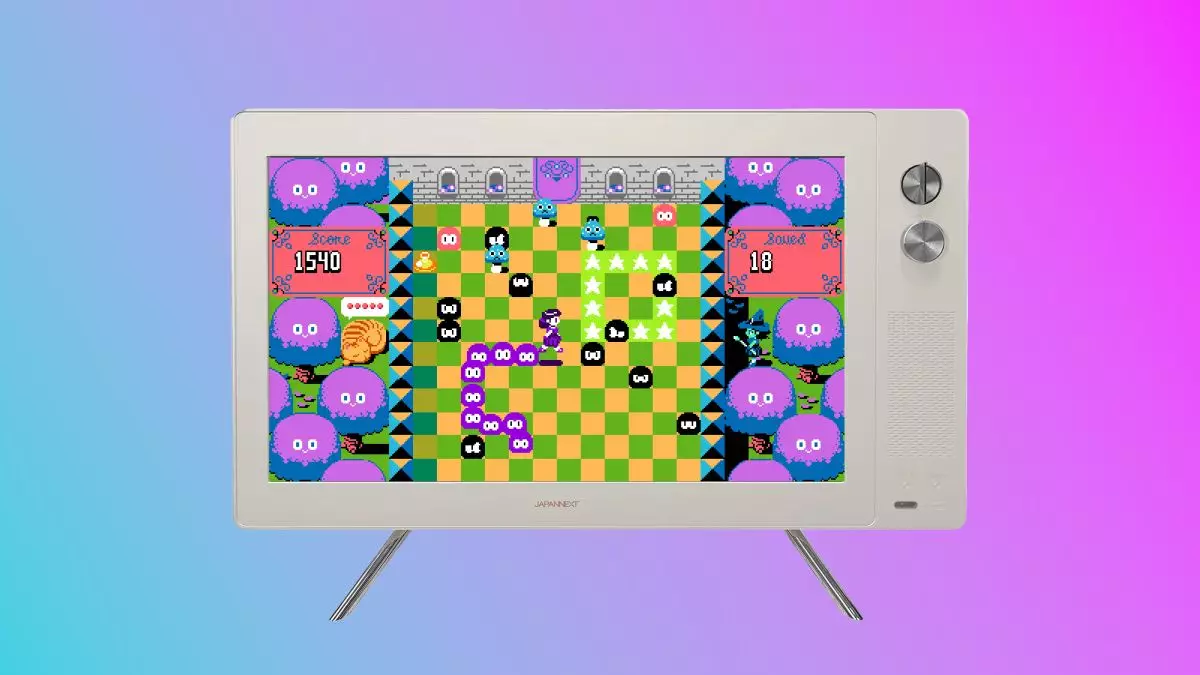The perpetual lure of nostalgia has an undeniable grip on many enthusiasts in various domains, including technology. This trend is particularly prominent when it comes to gaming peripherals and gadgets that combine a vintage aesthetic with modern functionalities. One such product that embodies this fusion is JapanNext’s JN-V236G180F-RETRO monitor. Though the appeal of retro designs may entice some consumers, I remain skeptical about whether such products genuinely deliver value, or if they merely capitalize on fleeting nostalgia.
As someone who has both a passion for and critical stance towards retro-themed tech, I find myself torn between admiration for the craftsmanship of classical designs and irritation at the often superficial execution. The concept of retro hardware tantalizes with its promise of echoing bygone eras of gaming while providing new-age performance. However, there often lies a discrepancy between nostalgia and practicality. The JN-V236G180F-RETRO seeks to bridge that gap with its vintage-inspired facade; a promise that might be instantly appealing to fans of classic video games. Still, while companies may package tech in nostalgic skins, the question remains—how well do these products function in today’s high-performance digital landscape?
For instance, the monitor’s dials, which offer simulated familiarity for adjusting brightness and volume, can appear charming, yet they also signify a reluctance to truly innovate. Instead of cutting-edge touch or software solutions often found in modern devices, these dials seem to cater to a sense of “times past.” This leads me to wonder whether such design choices are genuine attempts to evoke nostalgia or simple gimmicks.
On the surface, the JN-V236G180F-RETRO claims to integrate modern features: a 23.6-inch display at 1080p resolution, a 180Hz refresh rate, and support for AMD Freesync. However, a closer look raises questions about the monitor’s viability for serious gamers. While these specifications might seem impressive on paper, they do not necessarily translate to the immersive gaming experience demanded by today’s titles. The quality of images may fall short, especially for gamers who expect vibrant colors and intricate details—a standard that contemporary gaming monitors have set.
The idea of shifting to monochrome mode might indeed coax feelings of nostalgia, but does it justify the functionality? When considering performance in action-packed games like *Infinity Nikki*, one must question whether a retro appearance enhances gameplay or simply distracts from visual quality. When aesthetics compete with practical performance in gaming hardware, genuine enthusiasts may find themselves disillusioned.
Beyond the superficial charm lies a deeper issue: the quality of sound output. The monitor’s underwhelming 5W speakers invite frustration, especially during extended gaming sessions filled with stimulating soundscapes. For any serious gamer, relying on a monitor’s built-in audio is often impractical, and the necessity to connect external sound devices feels rather outdated. In a landscape where audio-visual experiences are paramount, the JN-V236G180F-RETRO falls short of providing holistic battle-ready functionality.
The charming wood paneling and retro build may win over specific consumers and collectors, but it does raise ethical concerns about the environmental impact of technology crafted from plastics and other materials. Is this cog in the retro-tech machine just another transitory novelty that will wind up adding to landfills? This persistent question weighs heavily on the decision-making process for many consumers, myself included.
Ultimately, while the JapanNext JN-V236G180F-RETRO monitor offers a nod to retro aesthetics, it feels caught between various worlds: the demanding expectations of today’s technology and the whims of nostalgia. For consumers who relish a vintage aesthetic, it may hold charm and sparkle, yet for gamers seeking substance alongside style, this monitor may not hold its ground against current alternatives.
The conversation surrounding retro designs in tech must evolve beyond mere nostalgia; it should center on performance, utility, and sustainability. As the tech landscape progresses, consumers deserve innovations that honor the past yet propel them into the future. Whether the JN-V236G180F-RETRO is a worthwhile investment ultimately depends on what you value more: the charm of nostalgia or the precision of modern technology.

